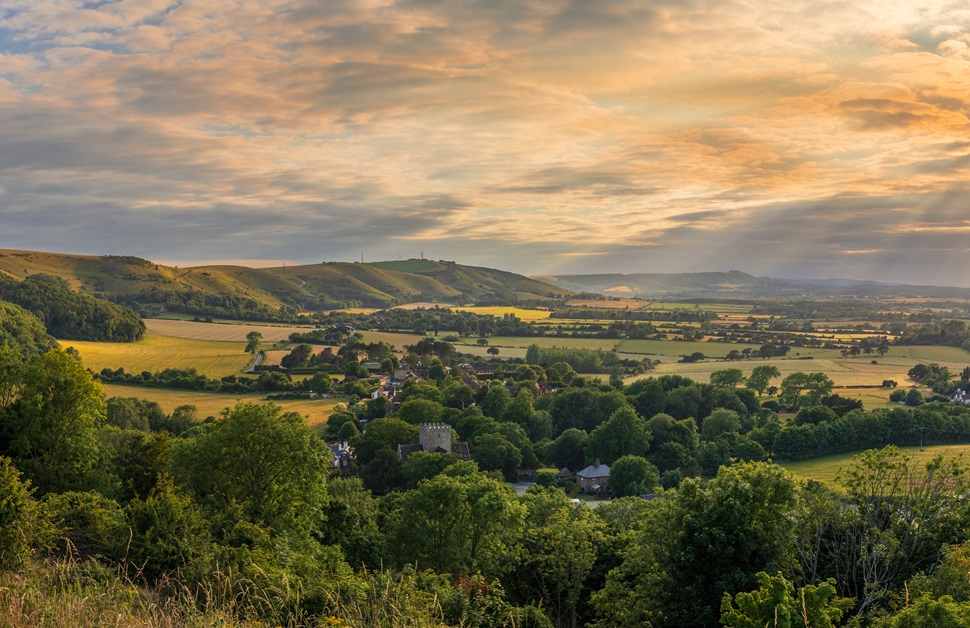West Sussex’s Widely Wooded Areas
Classed as the second most wooded county after Surrey, West Sussex in South East England is bursting with woodland and vastly populated by trees. More than half of the land in the county is designated as protected countryside, and the West Sussex highway network alone has somewhere between 500,000 and one million existing trees beside it.
Out of all 93 built-up areas in the county, the largest by population are Crawley and Worthing – both surpassing 100,000 inhabitants – followed by Bognor Regis, Horsham, Haywards-Heath, Rustington, Burgess Hill and Chichester, all with populations surpassing 30,000. Due to the nature of West Sussex, the towns and villages are connected by winding roads and scenic routes.
Over the abundant urban and rural landscape in West Sussex, 19% of the total land area is wooded, but concerns surround the situation regarding local trees, as a shocking 1.24 kilo hectares of relative tree cover was lost in the county between 2001 and 2023. Efforts to increase the tree canopy appear from local community groups and the local authorities, including the Donate a Tree Scheme, which enables residents to obtain a tree, support biodiversity, and combat recent issues caused by ash dieback.
Even though the county remains predominantly rural, the proven depletion of tree populations is a cause for concern in the eyes of the local authority. With that in mind, a development site with trees present may undergo intense scrutiny, causing potential issues with planning applications. In order to bypass such problems, it is recommended that a tree survey be arranged by the developer.

Measures Taken to Preserve Trees
An array of different activities, exercises and practices can pose potential risks to tree species, and in a development project, this covers construction, renovation and demolition work. Local councils up and down the country are tasked with monitoring unauthorised or unnecessary tree works, and more provisions are involved when it comes to the sensitive subject of protected trees.
Before tree works are carried out on a protected tree, prior permission will be needed from the local council, applying to conservation areas and Tree Preservation Orders (TPOs). Similar in many ways, the primary difference between the two options is that a conservation area will defend all trees inside of the set location while a Tree Preservation Order (TPO) will solely defend clearly outlined individual trees.
Applicable Local Authorities
- Adur and Worthing Council
- Arun District Council
- Chichester District Council
- Crawley Borough Council
- Horsham District Council
- Mid Sussex District Council
- West Sussex County Council
Assessments on Affected Trees
From individual homeowners to professional developers, a BS5837 tree survey will uncover all the information needed to move ahead with a new development where trees are present. Over the course of the British standard assessment, a qualified tree surveyor will quantify the value and condition of trees using a simple grading system, and from there, they will know the best course of action for each tree.
Depending on the state of trees on the development site, the tree consultant may opt for an aerial inspection, sonic tomography or any number of other methods designed to address health and determine the quality of the trees. Cross-referenced with the development plans, it will also be possible to gauge whether the trees will impact or be impacted by the proposed project.
At every possible opportunity, trees will be retained. Alternatively, if one of a selection of factors appears such as trees hazarding health and safety issues, interfering with the plans of the development or simply not being worth keeping due to being dead or dying, other options are available. The outcome of the British standard survey will decide if they are better off being relocated somewhere else inside or outside the site or destroyed and compensated for with the planting of new trees of the same or a similar species.
Expert advice for dealing with the trees on the site will be explained at length in a tree report, alongside any other considerations that will contribute to a successful planning application. Results from the BS5837 tree survey will be made clear by the tree surveyor, and if any further tree surveys are needed, tree reports will confirm this. Otherwise, no remaining obstacles should prevent the local planning authority from granting the application for a planning condition.
Reach Out to Our Admin Team
Other forms of tree surveys and reports that may be needed before planning consent will be granted include an Arboricultural Impact Assessment (AIA), Arboricultural Method Statement (AMS) or Tree Protection Plan (TPP). Our team has an advanced understanding of the arboricultural industry, tree consultancy services and the planning system, so we are perfectly placed to attend your site and guarantee that nothing prevents you from securing planning and progressing your project.
Refer to our team for your tree surveys, and we can advise you on the correct route to take before managing the entire process in-house, from the tree inspections right the way through to the arboricultural report. As soon as you contact us, we can create a bespoke free quote using the details of your development site and planning project, and with that, you are given freedom with your decision of whether or not to choose us as your provider of tree surveys.
Available options for speaking to us include via email, over the phone or by completing a quote form online. We will then explain how we work out the tree survey cost for you based on the dimensions of your site and the number of trees present. If you are happy to move forward, let us know and we can then attend your site for the necessary tree surveys, hand over your completed report, and help you to get planning approved by your local authority.